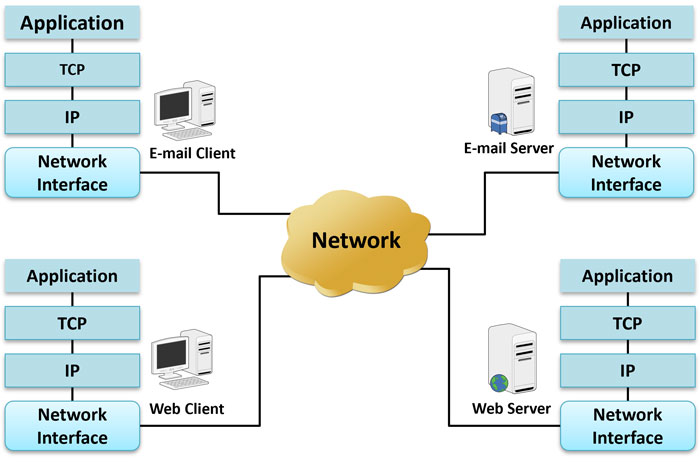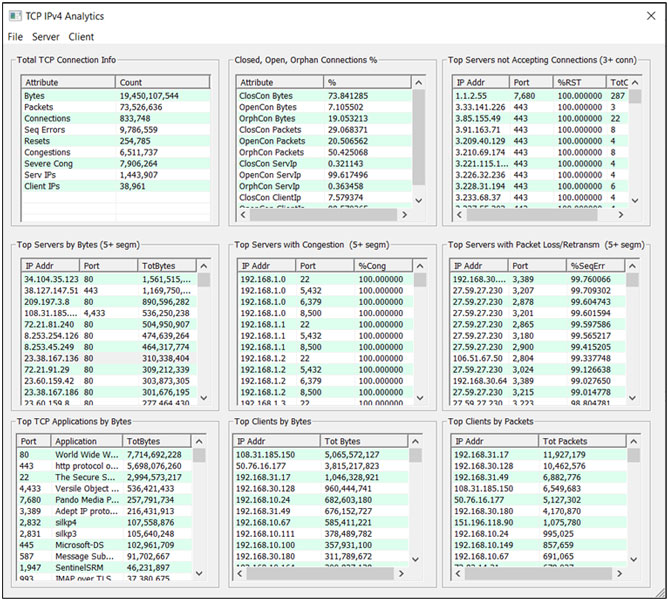Advanced TCP Network Analytics
Welcome to the latest issue of GL's Newsletter providing insight into our new Transmission Control Protocol (TCP) Analytics application which helps troubleshoot large bandwidth consumption, failed TCP sessions, packet loss, poor TCP throughput, and more.

Overview
GL’s TCP Analytics works in conjunction with the PacketScan™ protocol analysis software. TCP Analytics can process trace files with billions of records based on optimized algorithms. The core functionality is based on the data structures created by the sequential processing of TCP segments in the offline trace file captured by the PacketScan™ software.
GL’s PacketScan™ creates the base data structures for TCP connection analysis from an offline trace file containing captured frames or importing Wireshark packet captures. These data structures can be huge if the captured data files are hundreds of gigabytes or even many terabytes in size. The proper configuration of the computer’s virtual memory is required to handle this data and is accomplished with the TCP Analytics program.

Key Features
- Analyze TCP connections between internal company Local Area Network (LAN) connected computers and outside computers on the Wide Area Network
- Analyze TCP connections of a particular client-server pair
- Analyze TCP connections on a subset of a LAN
- Display top-level statistics
- Use PacketScan™ to display packets that belong to a selected TCP connection
- Export information to CSV files for subsequent Excel or a database import
- Sort tabular information by column values
 Back to Newsletter Index Page
Back to Newsletter Index Page